How to Get First-Time Visitors Hooked on Your Site
How do you know what they want to find on your page? How to create content that your visitors will admire? How do they like the content that you offer? What do they do on your page? And what are the ways that you can collect their feedback and enhance their browsing experience effectively? These are the questions that site owners commonly ask themselves when they want to get to know their audience better.
A seamless browsing experience is exactly what most of us want to provide to web users. How do most of us perceive this? We used to think that a good-looking design and a fast-loading page were the two basic components of an optimal UI. Well, we can't say that it's not right. It's good that modern web developers pay significant attention to the way everything is organized on the site and how fast all content loads on various devices. However, there are plenty of other factors that demand our close attention, and for which people commonly forget to optimize.
One of these pillars is organic search. Writing or designing for your loyal followers is always good. As a rule, the users who are returning to your website over and over again have already got used to the way everything is organized on your site. They know how to get to the page with the latest updates, how to find your contact details, or simply browse the gallery. Things are different with the first-time visitors. Such people commonly reach your website through the popular search engines or social media platforms, and everything that you share on your site is new and unknown to them. So, what should you do in order to get them interested and stay on your site for longer? This is exactly what we will be talking about below, in this post.
Satisfy the Users' Search Need
How did most website owners plan their online strategy in order to get to the top of Google search results a couple of years ago? There was one common misconception that the more keywords with which you loaded your page, the better the browsing experience you would provide for your consumers. However, things turned out to be somewhat different than was expected. When searching for a specific keyword via Google, people faced the problem of landing on spammy web pages that included nothing else but a set of niche-specific keywords. Google realized that and changed its algorithm in order for such negative user experience never to be repeated again. The release of the new Google Panda update resulted in a number of penalties for those websites that were cheating their audience, and, consequently, we gained more accurate search results.
Today we live in an age when Google can tell whether your website managed to satisfy the users' search need, including the number of clicks on your content, the time spent on the page, whether the information provided met their search expectations, or they had to leave for a different web resource, etc. Otherwise, if your content does not rank well for the specific keywords and it cannot please the intentions that users had behind the search, chances are that people will never, ever, return to your site after the negative search experience.
So, how can you address the users' intent?
“User intent” refers to the information for which a person searches online. If one were looking for, say, a home workout, he or she should be introduced to a series of video tutorials on how to do this properly at home or in the gym; some recommendations from the specialists in the field; supportive information for people with health issues; a list of gyms nearby, etc. In other words, a user goes to Google in order to learn and do something, or get tips on where to go in order to gain professional advice.
Let's assume that you have conducted the keywords search and come up with a set of the niche-specific keywords that suit each page of your site. After that you have optimized each page for those keywords, and you started to notice the increase of your site's ranking based on those terms. However, as the time passes by, you do not see an increased traffic flow even though you have managed to attain a higher keyword ranking. Why did that happen? Most likely this is all due to the fact that you do not understand the user intent. Below are three of the most popular strategies that will help you to map the keywords and the content on your site's pages.
#1 Better Understanding of the User Buying Cycle. This is one of the basics of learning the user intent. A buying cycle is a set of actions that users commonly do when they need to find more information about a specific product or find a better place to make a purchase. In this buying cycle, a person will first search the web for such broad terms as web design, for example, in order to get better educated and gain more niche-specific knowledge, which will help them move further in their research. This is the first stage of the buying cycle. Later on they will refine their search as they come up with one product that they want. The latter is called transactional stage. At that point the biggest amount of conversions happen. On the image below you can see all the three stages of the buying cycle visualized.
Now take a look at your online strategy. For what type of keywords are your pages optimized? Do you use broad terms? Then you should know that your job is to provide people with the general information about the topic, and then nudge them towards more transactional content, which will result in conversions. Those of us who use more specific terms are in the transactional mode, and are mostly focused on making users acquire something.
However, quite often we try to sell some stuff at the stage when our buyers aren't ready to make a purchase. Just one day I decided to go to one of our local stores selling tablets and smartphones just to see the prices and compare specifications of different models. But I didn't manage to do that. A pushy salesperson was following me all the time asking "How can I help you" and trying to make me buy something as soon as I asked a question or two about its specs. Of course, this pissed me off and I just turned around and left that shop. This is a common reaction of any person who is just trying to collect some information and doesn't have an intention of making a purchase right away. Online marketers do not seem to mind that, but we often behave the same way online. In order not to be pushy, you need to learn at what stage of the buying cycle your site visitors are and provide them with the appropriate content.
Now as we know who informational and transactional buyers are, it' time to find out what kind of data are navigational buyers looking for. Navigational buyers are searching the web with the intention to find some specific information without the intention to make a purchase.
#2 Below are some quick tips that will help you match keywords with the user intent.
- General keywords are a rather broad in scope, so in order to increase the usability of your site as a whole it's better to use long-tail keywords. Unlike the general keywords, these give user higher chances to find exactly what they want on your site.
- Focus on your company's niche and the services that it provides. Before you decide on the keywords based on which you need to optimize your pages, list everything that your company does and define the niche markets to which your business may have any relations. Next, when you start searching keywords, choose specific niche areas , which will help you target those users who are searching for the services that your company provides.
- Choose keywords that match buying cycles. First, determine the user personas. You can think of your own classification. For example, you can divide all your site visitors in the following groups: browsing, looking for the best price, ready to buy. As soon as you are ready with the classification, map keyword types to each of the groups. After that, guide each user to the landing page that will contain content based on his or her browsing preferences.
#3 Use Google Analytics Tool in order to understand the user intent. The tool can provide you with all the information that you need to know about the performance of the chosen keywords. The dashboard allows you to sort all results by the bounce rate and determine which search queries showed better results and kept users on the page for longer (keywords with low bounce rate) or those that didn't match their intent (keywords with high bounce rate). On top of that, Google Analytics tool allows you to see your average revenue by keyword report, which makes it easier to identify the highest converting keywords.
Google Analytics is not that only tool that you can employ into your work. There are plenty of other no less effective solutions that can provide you with a deeper insight into the user behavior on your site and help you improve the online strategy based on that knowledge (we will talk about them later in this post).
Outrank Competitors by Providing Users with the Best Content
Although it may sound somewhat exaggerated, you and your team should try hard to provide only quality content in order to become the best in your niche. Why do you need that? Well, quality content will help you boost SEO rankings, get more organic traffic, attract more new visitors to your site or blog and turn them into your loyal audience. What are the components of the best content and how do you find out what makes your data fall into that category? Here are some basic tips to consider.
Original content. Google can differentiate the original content from the duplicated data. While the sites that share "copied" data are banned and punished, those that provide unique content move to the top of the search results. Make sure that all of your posts are original and do not paraphrase the information that was shared before. There is one golden rule - if you have nothing to say, it's better to say nothing. So, in order not to waste time on rehashing the same content over and over again, think about introducing the audience to something really outstanding.
Here are a few ideas that you can implement into your site in order to stand out of the competition.
- Infographics. People enjoy the presentation of data in a visual way. Such content is easy to follow and understand. In addition, it gets a bigger amount of "likes" and "shares" in social media.
- People like entertaining content. This is when memes can come in handy. Memes can make your blog posts more lively and fun. Such type of content can be created even if you have never tried your hand in designing. Sites like Meme Generator and Quick Meme will help you with that.
- Comics are such a fun to create and read. This type of content also gets loads of shares online, way better than common written data. Comics remain up-to-date for longer, generating more traffic and inbound links for you.
- A good video can communicate your message in a more memorable way. Livestreaming video can bring more traffic and content to your web page.
- Audio and video podcasts are of great value to the web audience, especially when these are accompanied by content.
Interviews, SlideShare presentations, eBooks, case studies, how-to posts or order original content that you have on your mind can turn your blog or site in to a jaw-dropper.
Powerful headlines. A good headline is always noticeable. It triggers users' curiosity and invites them in, This is exactly what you need when targeting first-time visitors. Since 80% of the web audience will read your headlines and only 20% will get to your site to read the post,you should make every effort to capture their attention and motivate them to investigate the content further. All Internet marketers know that a headline is the last, but not the least, thing that they need to think of when writing something. It takes some time to create your perfect headline. You can even make a few variations in order to pick the most powerful one.
Here are several tricks that will help you write a powerful headline:
- Use numbers. There aren't really any rules. Most commonly, writers use numbers like 10, 15 or 20 for their "how-to" posts or compilations. Sometimes such obscure numbers like 13 or 27 work better. One thing that we can say for certain is that a human brain can remember 3 to 5 point on the average.
- Use catching adjectives like free, fun, breathtaking, absolute, strange, unexpected, etc.
- Make a promise. This should be something valuable. For example, you will tell them how to multiply revenue by 2 in a week. Or you will reveal the secret of how to become a better parent.
FORMULA FOR CREATING A HEDLINE
According to HubSport, the perfect headline formula should be like this: number of trigger word + adjective + keyword + promise. If you want to make sure that your headline will have the right effect on the audience, this free tool should come in handy for you.
Make your content thought provoking. How do you know if your content engaged and entertained the audience? The easiest way to find out is by checking the comments block below your posts. If you get loads of customer feedback and have provoked hot discussions on the site, then you are on the right path. If you cannot boast of such success, here are a few tips to consider.
- People make quick judgments about posts based on their introductory paragraph. The first few sentences at the beginning of your posts can be enough to decide whether your content is worthy of users' attention. Provide your readers with some hints on what you will be talking about in your article and make them want to read it from the top to the very bottom.
- Conclude your story with a call-to-action. Include some questions that will motivate your readers to reflect, share their knowledge and discuss some issues with fellow readers.
Posts for which there are active comments receive better indexing by the search engines. Google will see that the content is being frequently updated and is in great demand among the web audience and, as a result, it will make your page rank higher in its search results. The latter will make your content more noticeable for the first-time visitors.
Be Clear, Specific and Bold. These are the key three rules that you need to follow when writing for the web. Do not treat your readers like academics poring over small print. You shouldn't be wordy and show off your extensive vocabulary. Your texts should be concise and easy to scan, so as the users can find the desired information in a glance. Writing a persuasive web copy it easier than you might have thought. Here are the key rules to follow.
The most important information should go first. Writing a web copy is completely different from writing an essay, when you need to present the things that you are going to discuss, give an overview of the literature and only then proceed to the discussion itself. On the website, you need to do the opposite. First, you have to present the most interesting details from your blog post and only then provide explanations. Journalists call this the inverted pyramid.
Web users do not read, they scan. According to the research conducted by Nielsen Norman Group, only 16% of the web users read websites, all the rest scan content. In order to make your texts attractive for scanners, think if your headline communicates your post' message; is the image relevant to the text; are there any sub-headings in your article; do the latter summarize what you are going to discuss, etc. Online visitors, like hunters, are scanning web pages in search of the information that can please their "information hunger".
Write in common language. You should always remember that your readers are not necessarily working in the same field with you. So, using your professional vocabulary isn't always a good idea. Try to write in common language, with the simple worlds that even a child can understand. Do not be afraid to sound illiterate or something. Just keep writing with the purpose of being understood by your readers.
Visual appeal and readability should go hand-in-hand. The way you edit texts can significantly improve the readability of your content. Highlighting certain ideas with bold text, italics or CAPS will make users draw their eye to those areas unintentionally and read the emphasized piece of content in order to realize its importance. You can also add more hierarchy to your content while playing with the font size. A large headline broken into a headline with a sub headline will make your posts' objective easier to understand.
Most importantly, reduce noise on the page with the help of white space. It will make your website easier to read, more user-friendly and fast to scan.
Gather Feedback
This is a tried-and-true way to learn what your audience expects to get from you. Using Google Analytics is good in terms of tracking user behavior on the site, identifying their location, the things that they like or dislike, etc. However, these are purely statistics generated by the tracking tool. Gaining feedback from your real customers, getting to know what your target audience would like you to improve or add to your web page, turns out to be far more effective. There are plenty of smart tools for collecting users' feedback. Below we provide a list of the most powerful solutions on the web.
***
- Plans: the Basic plan is free, premium plans start from $29/mo
- Heatmaps
- Visitor recordings
- Conversion funnels
- Form Analytics
- Feedback Polls
- Surveys
- Recruit User Testers
***
- Plans: start from $63/mo
- Heatmaps - not included
- Recordings - not included
- Surveys for desktops and mobiles
- Funnels
- Lead generation forms
- Email collector and CTA overlays
- Geographic targeting
***
- Plans: the Basic plan is free, premium plans start from $25/mo
- Heatmaps -not included
- Recordings - not included
- Surveys
- Partner integrations & API
- Brand tracking
- Concept testing
- Survey programming
- WuFoo online forms
***
- Plans: Free plan, premium plans start from $82/mo
- Heatmaps -not included
- Recordings - not included
- Unlimited number of surveys
- Unlimited responses
- Unlimited tasks or cards
- Your own logo & color
- Unlimited questionnaires
- Password protect surveys
***
- Plans: 30 day free trial, premium plans start from $9/mo
- Heatmap
- Confetti (distinguish clicks on your site by referral sources, search terms and more)
- Scrollmap (shows where people leave the page)
- Overlay (the number of clicks on each element of the page)
- Surveys - not included
***
- Plans: start from $500/mo
- Heatmap - not included
- Recordings -not included
- Enterprise survey
- Market research
- Transportation research
***
- Plans: Free plan, premium plans are priced starting from $150/mo
- Heatmap - not included
- Recordings - not included
- Funnel analysis
- User engagement
- Retention
- Mobile A/B testing
***
- Plans are priced starting from $200/mo
- Heatmap - not included
- Real-time tracking
- A/B testing
- Behavioural comparison
- Behavioural campaigns
- Surveys - not included
Final Thoughts
The sky is the limit. There is always room for perfection, especially when it comes to user satisfaction. We hope that the basic rules that we have highlighted in this blog post will help you understand your site visitors better, track their behavior, get feedback via the aforementioned or any other survey tools, and make your site a jaw-dropper.
Now we'd like to hear from you. What tools or technique do you implement in your site in order to engage and entertain the audience? Do you use any of the aforementioned tricks in practice? Feel free to share your feedback below this post.
Get more to your email
Subscribe to our newsletter and access exclusive content and offers available only to MonsterPost subscribers.

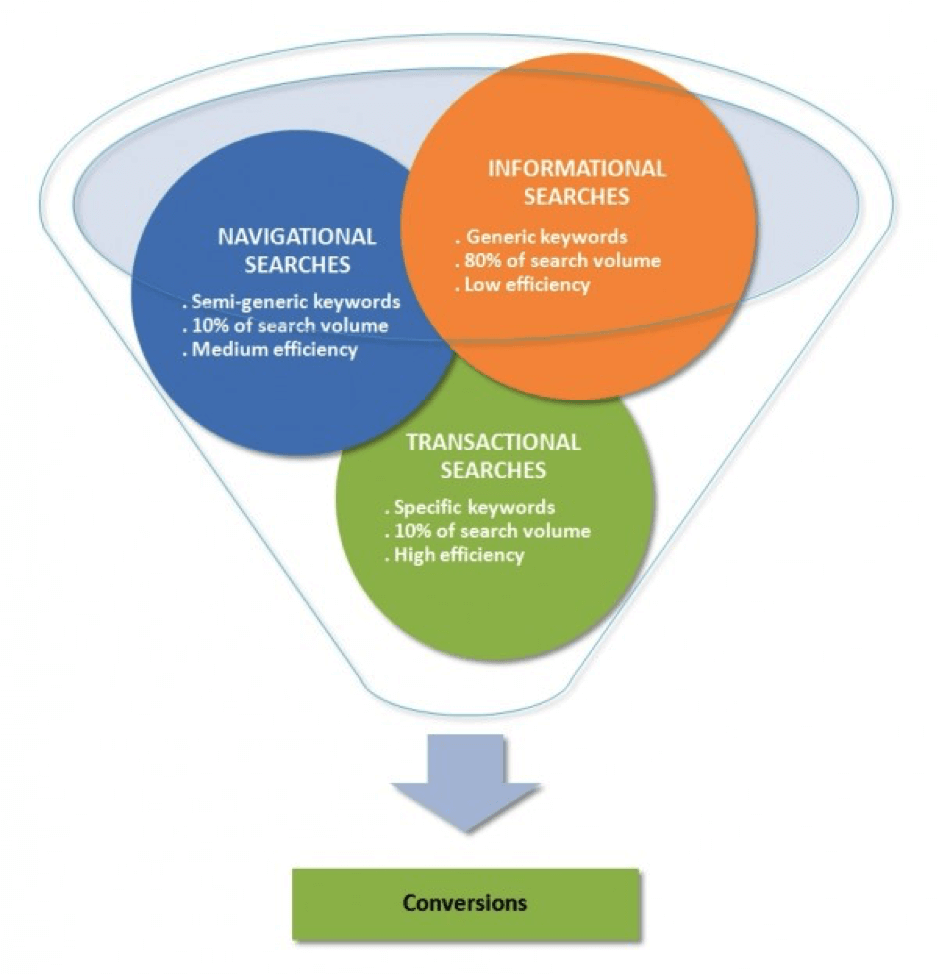

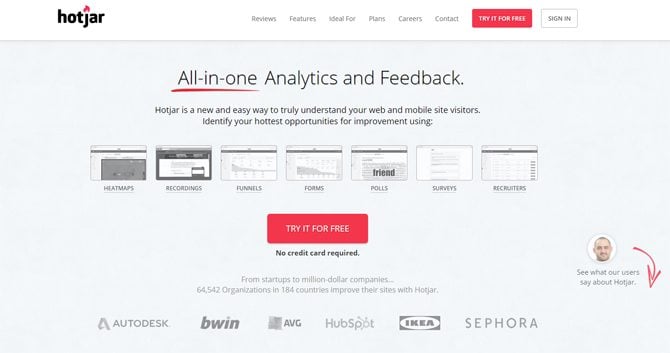
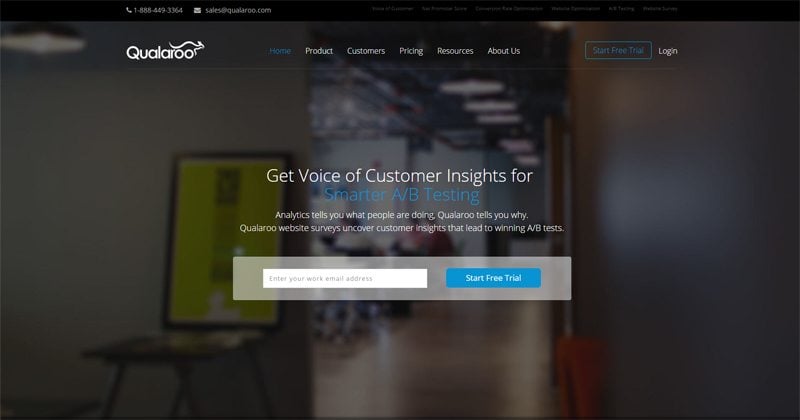

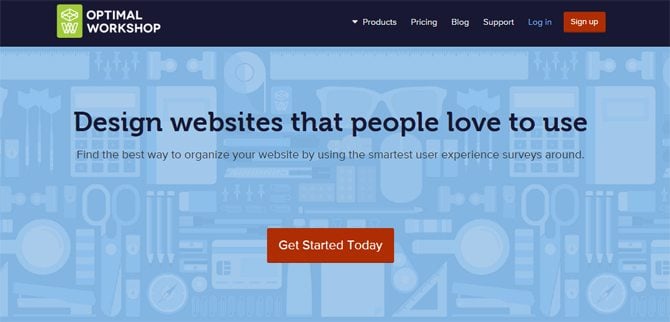
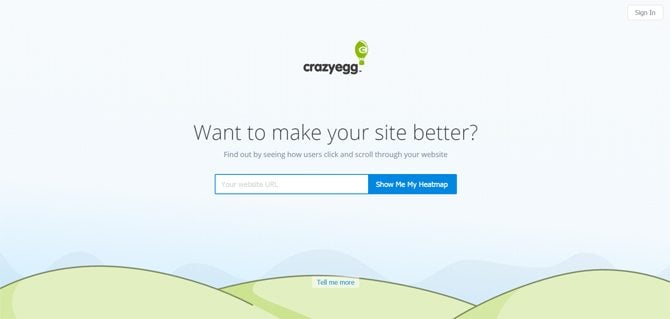

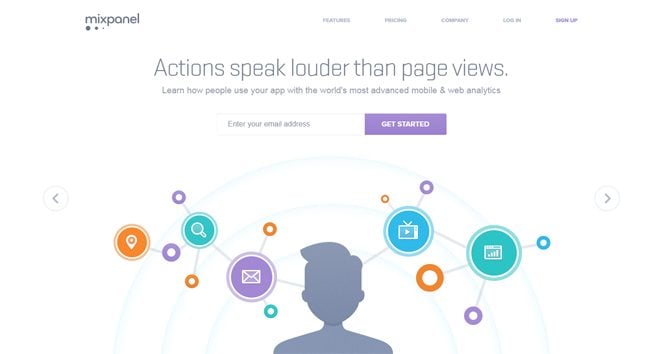
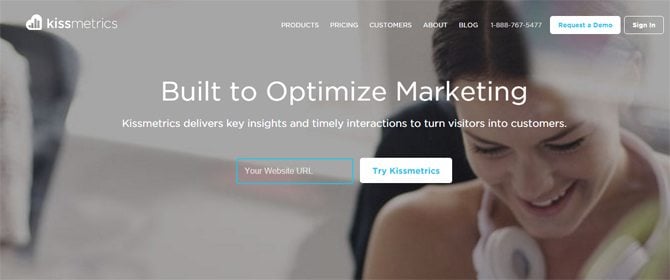
Leave a Reply
You must be logged in to post a comment.